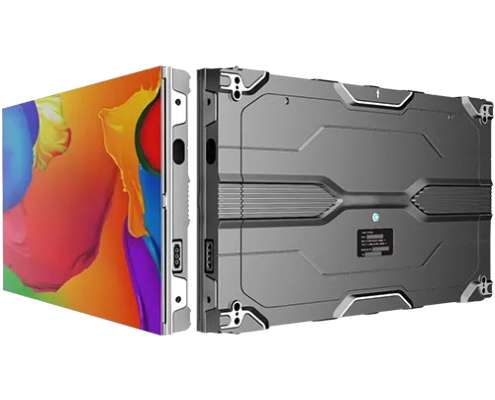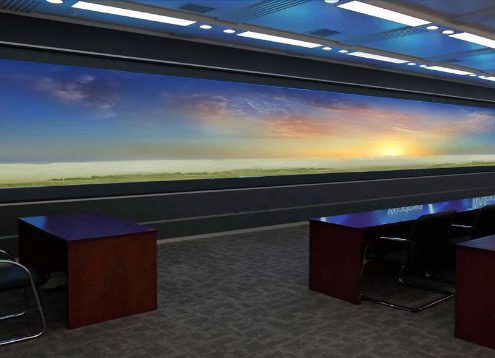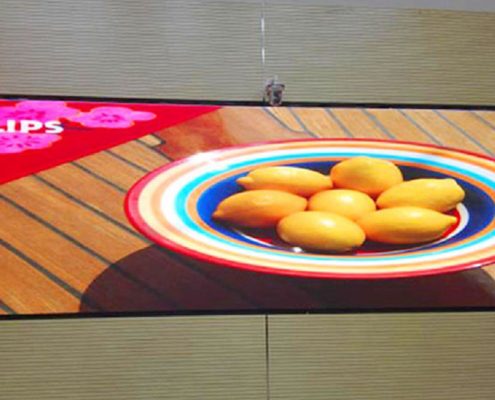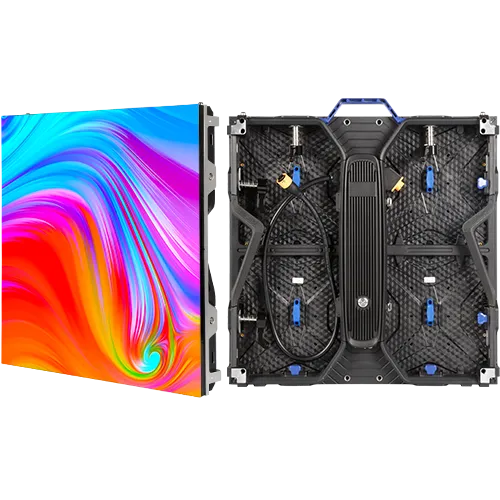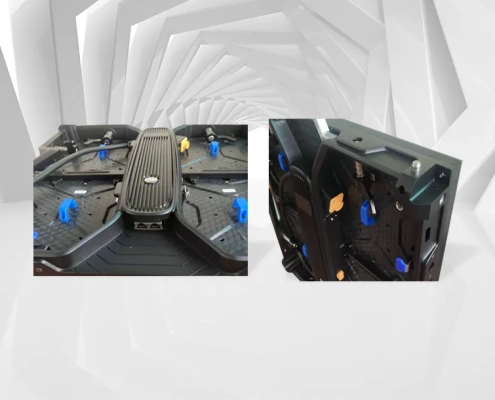Online Consultation or Need a Quote?
The evolution of LED technology has been a journey of innovation and transformation, leading us to the cutting-edge COB LED Display, a marvel in the display industry.
LED technology began as a simple, low-intensity light source and has evolved into a cornerstone of modern display technology. The journey from monochromatic LEDs to the vibrant, full-color displays we see today is a testament to decades of research, development, and innovation. The advent of blue LEDs in the 1990s marked a significant breakthrough, allowing for the full-color displays that have become ubiquitous in our daily lives. As LED technology advanced, it paved the way for more sophisticated applications, leading to the development of various LED-based displays, each offering improvements in brightness, color accuracy, and energy efficiency.
What is the COB LED Display?
COB LED, or Chip on Board LED, is a technology where multiple LED chips are packaged together as one lighting module. Unlike traditional LED setups, where each chip is individually mounted and wired on the circuit board, COB LEDs are mounted directly onto the substrate of the board, and multiple chips are connected in one module.
Definition and Explanation: COB LED technology is known for its increased efficiency and higher light quality. By packing multiple LED chips together, COB LEDs produce a more intense and uniform light, which is perfect for COB LED Displays where image clarity and color uniformity are crucial.
Comparison with Traditional LED Technologies: Traditional LED technologies like SMD (Surface Mounted Device) and DIP (Dual in-line Package) involve mounting individual LEDs onto the surface of the circuit board. SMD LEDs are smaller and provide good color mixing, while DIP LEDs are known for their brightness and efficiency. However, COB LEDs surpass these technologies by offering a higher density of LEDs, resulting in a smoother light output and a more compact design. This makes COB LED Displays ideal for applications where space and image quality are critical.
The Technical Advancements of COB LED
COB LED technology has brought about several technical advancements in the LED industry, particularly in terms of pixel pitch and image quality.
How COB LED Technology Works: In COB LED Displays, LEDs are mounted directly onto the substrate of the panel, and a single module can contain many chips. This direct mounting reduces the space between the light source and the diffuser, which significantly improves the uniformity of light distribution. Additionally, the heat generated by the LEDs is more efficiently dissipated, which increases the lifespan and stability of the display.
Advancements in Pixel Pitch and Image Quality: One of the most significant advancements of COB LED technology is the reduction in pixel pitch it allows. Pixel pitch refers to the distance between the centers of two adjacent pixels. A smaller pixel pitch means a higher resolution and a clearer image, as the pixels are closer together and less visible individually to the naked eye. COB LED Displays can achieve an ultra-fine pixel pitch, resulting in stunningly clear and detailed images. This makes them particularly suited for high-definition displays and applications where image quality is paramount.
Significance in the Display Industry: The introduction of COB LED Display technology has made a profound impact on the display industry. With its ability to provide higher resolution, increased durability, and superior color uniformity, COB LED technology is not just an improvement over previous LED technologies; it’s a game-changer. It offers solutions to many of the limitations that have long challenged display manufacturers, such as the issue of individual LED failure and the difficulty of achieving true black levels. The fine pixel pitch achievable with COB LED Displays means that they can be used in a wide range of applications, from high-end televisions and digital signage to intricate, artistic installations.
Advantages of COB LED Display Technology
COB LED Display technology is rapidly becoming the preferred choice for a wide range of applications, thanks to its numerous advantages over traditional LED technologies.
Superior Impact, Dust, & Moisture Protection
One of the standout features of COB LED Displays is their enhanced durability and protection against various environmental factors. COB LED Displays are known for their robust construction. The direct mounting of LED chips onto the substrate provides additional protection against impact, dust, and moisture. This makes COB LED Displays more resistant to damage and degradation over time, ensuring they maintain their performance and appearance.
Enhanced Visual Experience
COB LED Displays are not just durable; they also offer a superior visual experience, thanks to their advanced technology. The fine pixel pitch achievable with COB LED technology results in a higher resolution and a smoother image, making it ideal for close-up viewing. The high contrast ratio and color accuracy ensure that images are vivid and lifelike, with deep blacks and bright whites.
Longevity and Reliability
The longevity and reliability of COB LED Displays are unmatched, making them a smart long-term investment.
COB LEDs typically have a longer lifespan compared to traditional LED technologies. The direct mounting of the chips enhances heat dissipation, reducing thermal stress and prolonging the life of the display. Additionally, the lower failure rate of individual LEDs in COB displays means they are more reliable over time.
The extended lifespan and enhanced reliability of COB LED Displays translate to lower maintenance costs and less frequent replacements. This makes COB LED technology not only an environmentally friendly choice but also a cost-effective one in the long run.
How to Choose the Right COB LED Display
Selecting the right COB LED Display for your needs involves understanding various factors that contribute to the performance and suitability of the display in different environments. Here’s a detailed guide to help you make an informed decision when choosing a COB LED Display.
Understanding Your Requirements
Before diving into the specifics of COB LED Displays, it’s crucial to understand your requirements. Consider the following:
Purpose and Application: Determine what you’ll be using the COB LED Display for. Is it for home entertainment, outdoor advertising, corporate presentations, or public information?
Environment: Consider the environment where the display will be installed. Indoor and outdoor environments have different challenges, such as lighting conditions and exposure to elements.
Key Factors to Consider
Once you have a clear understanding of your requirements, consider these key factors to choose the right COB LED Display:
Pixel Pitch: Pixel pitch is the distance between the centers of two adjacent pixels. A smaller pixel pitch means higher resolution and better image quality, especially important for close viewing distances.
Size and Configuration: Determine the size of the display you need. COB LED Displays are modular, so you should also consider whether you need a standard shape or a custom configuration.
Brightness and Contrast: Ensure the display has sufficient brightness for its environment, especially for outdoor use. Higher contrast ratios will provide deeper blacks and more vibrant colors.
Viewing Angle: A wider viewing angle means the image quality won’t degrade from different viewing positions, important for public displays and large venues.
Durability and Protection: For outdoor or industrial applications, look for displays with good protection against dust, moisture, and impact.
Energy Efficiency: Consider the energy consumption of the COB LED Display, as this will impact long-term operating costs.
Maintenance and Longevity: Check the expected lifespan of the display and understand the maintenance it requires. COB LED Displays are generally durable and have a lower failure rate, but it’s still important to consider the ease of repair and maintenance.
Testing and Seeing in Person
If possible, see a COB LED Display in action before making a decision. This can give you a better understanding of the image quality and performance. Ask for a demonstration of the display’s capabilities, especially in conditions similar to where you’ll be using it.
COB LED in Action: Diverse Applications of COB LED Display
COB LED Display technology is not just a breakthrough in visual display technology; it’s a versatile solution that has found its way into various applications. Its unique features make it suitable for a wide range of environments and purposes.
Home Entertainment
COB LED Displays have transformed home entertainment, bringing the cinema experience into living rooms.
Home Theaters: With their superior image quality and color accuracy, COB LED Displays are perfect for creating an immersive home theater experience. They provide crisp, vibrant images that make movies and games come to life. Gaming: Gamers benefit from the low latency and high refresh rates of COB LED Displays, not to mention the stunning visuals that add a new level of immersion to their gaming experience.
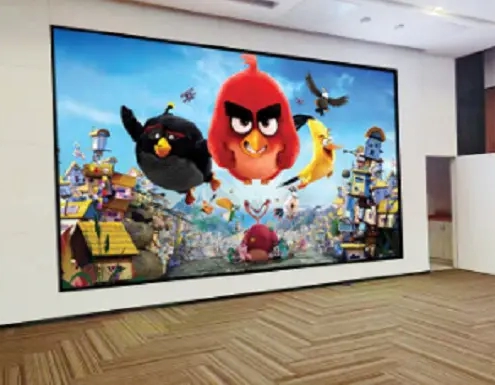
Commercial Advertising
In the world of advertising, visibility and impact are everything. COB LED Displays deliver on both fronts.
Digital Billboards: COB LED Displays are used in digital billboards to capture attention with bright, dynamic advertisements. Their durability makes them ideal for outdoor environments.
Retail Displays: In retail settings, COB LED Displays are used to create eye-catching displays that showcase products and promotions, drawing customers in and enhancing the shopping experience.
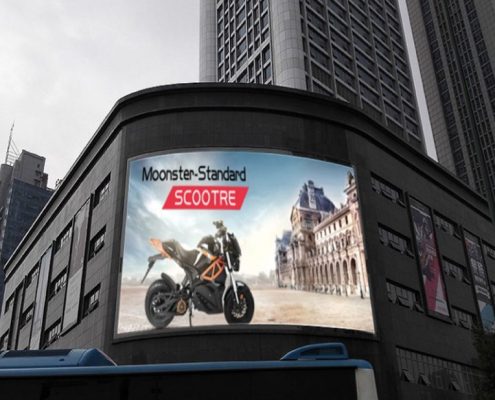
Corporate and Educational Settings
COB LED Displays are valuable tools for communication and learning in corporate and educational environments.
Conference Rooms: In corporate settings, COB LED Displays are used to present information clearly and engagingly during meetings and presentations.
Classrooms and Lecture Halls: In educational institutions, these displays serve as dynamic tools for learning, displaying educational content in a way that’s engaging and accessible to students.
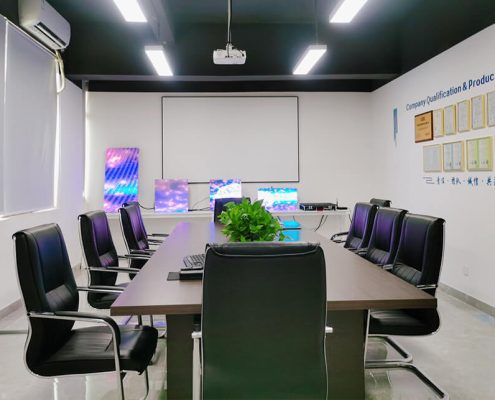
Public Information and Safety
The clarity and visibility of COB LED Displays make them ideal for conveying public information and safety messages.
Transport Hubs: Airports, train stations, and bus terminals use COB LED Displays to provide real-time information, schedules, and safety messages to travelers.
Public Safety: In emergency situations, COB LED Displays can be used to convey critical information to the public quickly and clearly.
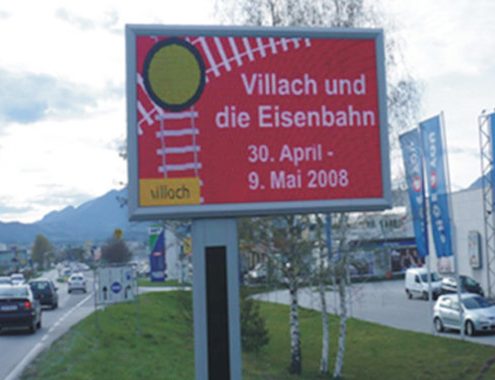
Art and Culture
COB LED Displays have also found a place in the world of art and culture, where they are used to create stunning installations and displays.
Museums and Galleries: These displays are used to enhance exhibits with dynamic visual content, adding a new dimension to the visitor experience.
Performing Arts: In theaters and concert halls, COB LED Displays are used as dynamic backdrops, enhancing performances with vivid, engaging visuals.
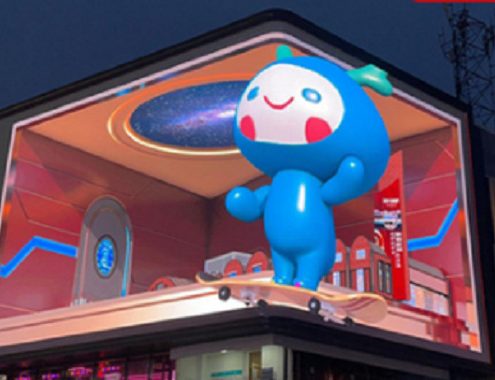
COB LED Display vs. Other LED Display Technologies
COB LED vs. OLED
| Feature | COB LED Display Advantages | OLED Advantages |
| Brightness and Outdoor Performance | Generally offer higher brightness levels, suitable for outdoor and brightly lit environments. | Provide excellent contrast and true blacks but may not perform as well under bright ambient light. |
| Durability and Lifespan | Known for long lifespan and robustness, less prone to burn-in issues. | Offer superior picture quality but can suffer from burn-in over time. |
| Flexibility and Size | Catching up with flexible technology and typically offer more options in size and configuration. | Celebrated for thinness and flexibility, allowing for curved and flexible screen designs. |
| Cost and Maintenance | May have a higher initial cost but tend to have lower long-term maintenance costs. | Can be more expensive to repair and replace due to organic materials and potential for burn-in. |
COB LED vs. QLED
| Feature | COB LED Display Advantages | QLED Advantages |
| Color and Brightness | Provide excellent brightness and color accuracy, visible even in direct sunlight. | Known for wide color gamut and high brightness levels due to the Quantum Dot layer. |
| Viewing Angles | Typically offer wider viewing angles, ensuring consistent image quality across positions. | Can suffer from limited viewing angles as a type of LCD, affecting picture quality at certain angles. |
| Screen Burn-in | Do not suffer from burn-in, suitable for displaying static images for extended periods. | Also resistant to burn-in, making them suitable for long-term static image display. |
| Cost and Size Flexibility | Can be customized to fit specific dimensions and shapes, ideal for unique installations. | Generally less expensive, especially at smaller sizes, but lack the modular capabilities of COB LEDs. |
The Future of COB LED Displays
The future of COB LED Display technology is bright and promising, with continuous advancements expected to enhance their capabilities and accessibility.
Innovations on the Horizon for COB LED Display
The relentless pace of technological advancement suggests an exciting future for COB LED Displays. Here’s what we can anticipate:
Smaller Pixel Pitches: As technology advances, we can expect to see even smaller pixel pitches, leading to higher resolution COB LED Displays. This will allow for even clearer and more detailed images, making COB LEDs suitable for a wider range of applications, including those requiring close-up viewing.
Improved Energy Efficiency: Future COB LED Displays are likely to be even more energy-efficient, reducing the cost of operation and the environmental impact. Advances in materials and technology will drive this increased efficiency.
Enhanced Durability and Flexibility: Ongoing research is likely to result in COB LED Displays that are not only more durable and resistant to environmental factors but also more flexible. This could open up new possibilities for innovative installations and applications.
ntegration with IoT and Smart Technology: As the Internet of Things (IoT) and smart technology continue to evolve, we can expect COB LED Displays to become more interactive and responsive to their environment, offering personalized and adaptive viewing experiences.
Making COB LED Accessible
While COB LED technology offers numerous advantages, its cost has been a barrier for some potential users. However, trends suggest that COB LED Displays are becoming more accessible:
Trends in Cost: The cost of COB LED Displays has been decreasing as the technology matures and production processes become more efficient. This trend is expected to continue, making COB LEDs an increasingly cost-effective option.
Factors Influencing Price: Several factors influence the price of COB LED Displays, including the resolution, size, and specific features. Understanding these factors can help you make a more informed decision.
Tips for Finding Cost-Effective Solutions: To find a cost-effective COB LED solution, consider the total cost of ownership, including energy consumption and maintenance, not just the initial purchase price. Additionally, consider modular COB LED Displays, which can offer more flexibility and may be more cost-effective to repair or upgrade.
FAQs About COB LED Display
What is COB LED screen?
A COB (Chip on Board) LED screen is a type of LED display where multiple LED chips are packaged together and mounted directly onto the display’s substrate rather than individually. This results in a denser array of lights, offering a smoother and more uniform illumination with higher brightness and less space between the light sources, leading to improved image quality and color uniformity.
Are COB LEDs better?
COB LEDs can be better in certain applications due to their advantages. They offer higher brightness, better color uniformity, and a more seamless viewing experience with a smaller pixel pitch. COB LEDs are also more robust and resistant to dust, moisture, and impact, making them durable and reliable. However, whether they are better depends on the specific requirements of the application, as other types of LEDs like SMD might be more suitable in certain scenarios.
What does COB mean in LED lights?
COB stands for Chip on Board in LED lights. It’s a method of LED packaging that involves mounting multiple LED chips directly onto the substrate of the light panel. This approach allows for a denser LED array and a more compact design, leading to a smoother light output and a higher intensity of light from a single module.
What is the difference between SMD and COB LED display?
The primary difference between SMD (Surface Mounted Device) and COB (Chip on Board) LED displays lies in their construction and performance:
SMD LED Display: SMD technology mounts individual LED chips onto the surface of the circuit board. Each chip represents a single pixel and can emit red, green, or blue light. SMD LEDs are known for their good color mixing and are widely used in various applications.
COB LED Display: In COB LED displays, multiple LED chips are packaged together as one lighting module and mounted directly onto the substrate. This results in a higher density of LEDs, providing a smoother and more uniform light output. COB LEDs typically offer higher brightness, better color uniformity, and greater durability than SMD LEDs.
Choosing between SMD and COB LED displays depends on the specific needs of the application, considering factors like brightness, resolution, viewing distance, and environmental conditions.
CONTACT US
Consult with Our Free Advisor for Your Next Project!

